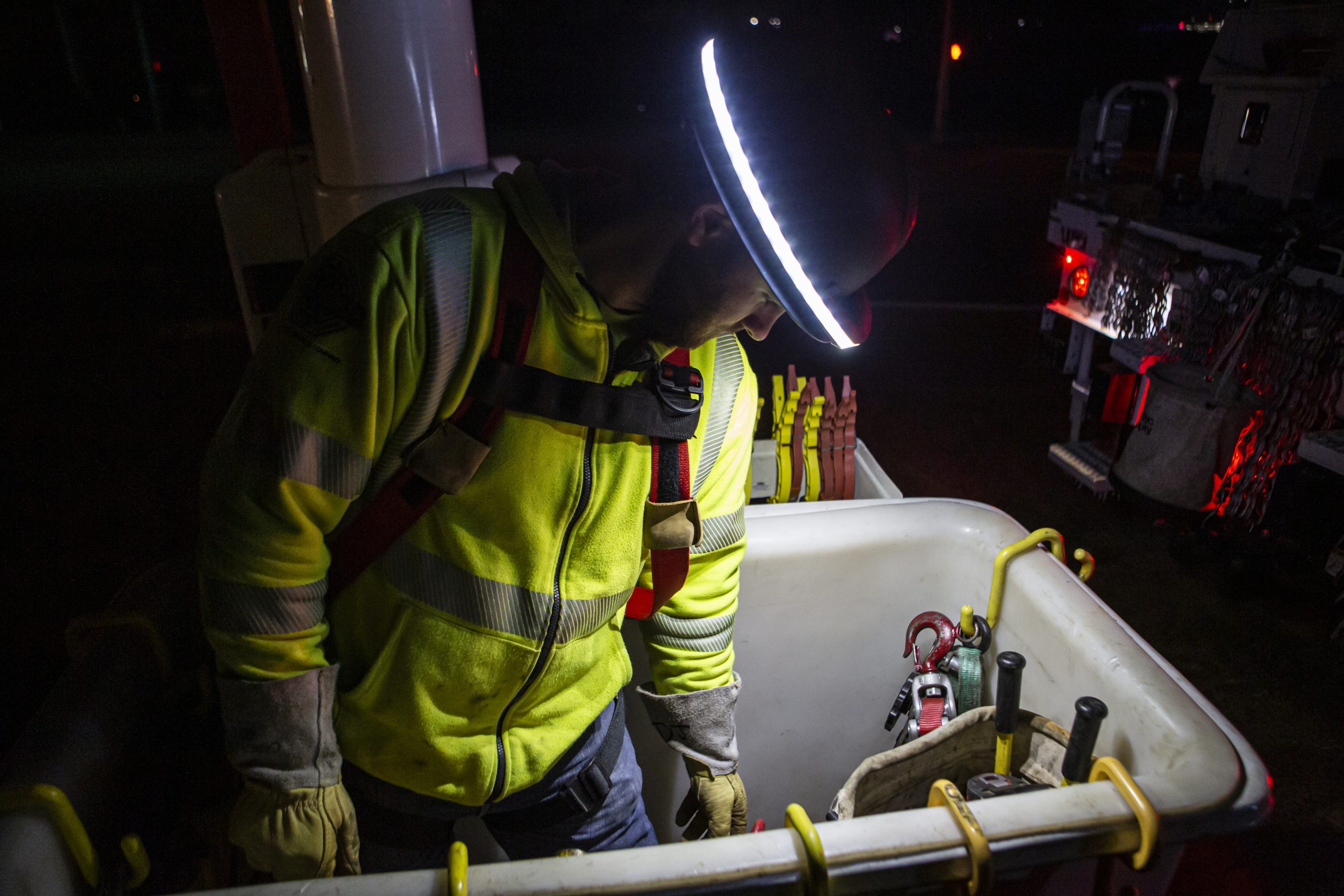Short Safety Talks for Linemen
December 23, 2022
A safety talk commonly referred to as a toolbox talk, is an informal group discussion focusing on a health or safety issue. We have covered toolbox talks in the past, but it is such an important topic we wanted to take it a step further. Promoting a safety culture will keep you and your crew productive. To make your job easier, we are going to provide you with a few short safety talks to use with linemen. We hope to inspire your toolbox talks and keep your team on the right track.

Anchor Systems for Fall Protection
Knowledge of anchor points is very important for linemen. Workers will connect their lifeline to an anchor, the secure connection point for a fall protection system. Your anchor point must be correctly installed and the right type to keep a lineman from potentially hitting the ground if a fall occurs. Depending on the type of work being done, there are three basic types of anchor systems that are commonly used. First is the designed fixed support. These are load-related anchors specifically designed and permanently installed for fall protection. Next is temporary fixed support. These systems are designed to be connected to a structure. They require installation using specific instructions. Last are existing structural features or improvised anchors. These are not designed to be used as anchor points and may need to be verified before use. It is important these anchor points are closely checked to ensure they will have the adequate capacity to serve as safe anchor points. In 2014 OSHA passed fall protection regulations that require all utility workers to use fall protection when they climb above a height of 4 feet. These regulations also require body harnesses to be worn at all times by linemen, no matter their work surface. When a lineman does not use fall protection, they are putting themselves at risk for injury or death.
Attitude and Safety
A positive attitude affects the overall health and safety of a lineman. The Mayo Clinic lists many benefits to having a positive attitude, such as increased lifespan, greater resistance to illnesses, lower levels of distress and pain, etc. On the other hand, a negative mindset can lead to carelessness, taking shortcuts, or even a distraction from a work task. In addition, having a negative attitude towards safety will lead to unsafe behaviors. Unsafe behaviors lead to incidents on the job. Is your overall perspective as it relates to safety negative? If so, why is that? There are ways to improve your attitude:
1. Acknowledge it. By taking the time to admit you are struggling with a negative attitude, you can take steps to change it.
2. Find the Source. Figure out what is causing your negative feelings and put a name to the source.
3. Take Action. Do you need to have a respectful conversation with a co-worker? Most issues can be solved when all parties can voice their concerns.
4. Stay Aware. Monitor your thoughts and conversations with others. If you feel yourself going in a negative direction, turn things around. It all starts with you.
Pressure on a Lineman to get Work Done Quickly
Lineman experience pressure to get their work done quickly in more extreme ways than others. Many linemen are sent out in dangerous weather or after natural disasters and are expected to get the power back up and running as quickly as possible. These pressures are usually from external sources, such as homeowners and businesses who want to get back to normal as quickly as possible. There can also be internal pressure to get tasks completed quickly. Different things can be done on the job in order to avoid the risk of injury caused by rushing through tasks.
- Plan out your work prior to starting it. Make sure you have all the tools and equipment needed.
- Respectful communication between employees during high-pressure situations will help work to be completed more efficiently and safely. Yelling and being disrespectful often result in unnecessary stress, as well as linemen feeling even more rushed and likely to make an error.
- Take time to evaluate what you are doing and realize when you are rushing yourself.
There are many reasons why an individual may feel like they need to perform work faster. It may come from an external source, such as working during a natural disaster, or it may be created internally by the individual. No matter where the pressure is coming from, too much will result in more exposure to hazards and injuries.
Make toolbox talks a regular occurrence with your team. It will set everyone up for safety and success. In addition, a cohesive unit will be more productive and efficient. These are examples of simple and quick toolbox talks you can use to start your work day positively.